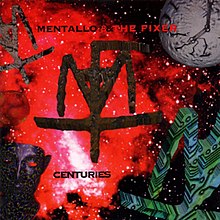암묵적 관계 평가 절차
Implicit Relational Assessment Procedure| 암묵적 관계 평가 절차 | |
|---|---|
| 동의어 | IRAP |
| 목적 | 암묵적인 태도의 척도 |
암묵적 관계 평가 절차(IRAP)는 컴퓨터 기반의 심리 측정법이다.그것은 암묵적 연관성 [1]테스트의 영향을 많이 받았고 암묵적 [2][3]태도의 간접적 측정으로 언급되는 여러 과제 중 하나이다.IRAP는 연관 [4]정보가 아닌 관계형 또는 명제를 포함할 수 있는 비교적 몇 안 되는 간접 측정 중 하나이다.IRAP는 Dermot Barnes-Holmes에 의해 개념화되어 2006년에 처음 [5]출판되었습니다.임상적으로 관련된 기준 효과의 메타 분석은 IRAP가 양호한 [6]유효성을 가지고 있음을 시사한다.그러나 두 번째 메타 분석은 많은 반응 시간 기반 [7]측정과 마찬가지로 신뢰성이 떨어진다는 것을 시사한다.IRAP를 이용한 연구는 종종 언어의 기능 분석 이론인 관계형 [8]프레임 이론과 연계된다.
응용 프로그램 및 사용
절차.
컴퓨터 기반 측정인 IRAP는 개인에게 두 가지 응답 옵션 중 하나(예: "유사"와 "다르다")를 사용하여 화면에 나타나는 두 자극(예: "개"와 "우프") 사이의 관계에 정확하고 신속하게 응답하도록 요구한다.블록 쌍에 걸쳐 개인은 대조적인 두 가지 응답 패턴(예: "dog-woof-silar" 대 "dog-woof-different")을 사용하여 응답해야 합니다.그런 다음 이들 블록 간의 반응 시간을 비교합니다.두 블록 유형 간의 응답 시간 차이는 IRAP 효과로 정의됩니다.작성자에 따르면, "기본적인 가설은 일관성 없는 시행에 비해 일관된 블록 전체에서 평균 응답 지연 시간이 더 짧아야 한다는 것입니다.즉, 참가자는 현재 신념을 반영하는 관계형 과제에 그렇지 않은 과제보다 더 신속하게 대응해야 한다."[1]
실장
IRAP는 Visual Basic 6에서 처음 구현되었으며, Dermot Barnes-Holmes에 의해 비공개 소스 하에 학술용으로 무료로 배포되었습니다.PsychoPy로 작성된 멀티플랫폼 오픈소스 구현도 Open Science [9]Framework에서 이용할 수 있습니다.
「 」를 참조해 주세요.
레퍼런스
- ^ a b Barnes-Holmes, Dermot; Barnes-Holmes, Yvonne; Stewart, Ian; Boles, Shawn (2010). "A sketch of the Implicit Relational Assessment Procedure (IRAP) and the Relational Elaboration and Coherence (REC) model" (PDF). The Psychological Record. 60 (3): 527–542. doi:10.1007/BF03395726. S2CID 55621415.
- ^ Nosek, Brian A.; Hawkins, Carlee Beth; Frazier, Rebecca S. (2011). "Implicit social cognition: from measures to mechanisms". Trends in Cognitive Sciences. 15 (4): 152–159. doi:10.1016/j.tics.2011.01.005. PMC 3073696. PMID 21376657.
- ^ De Houwer, Jan; Moors, Agnes (2010). "Implicit measures: similarities and differences". In Gawronski, Bertram; Payne, B. Keith (eds.). Handbook of implicit social cognition: measurement, theory, and applications. New York: Guilford Press. pp. 176–195. ISBN 9781606236734. OCLC 457010488.
- ^ De Houwer, Jan; Gawronski, Bertram (2014). "Implicit measures in social and personality psychology". In Reis, Harry T.; Judd, Charles M. (eds.). Handbook of research methods in social and personality psychology (2nd ed.). Cambridge, UK; New York: Cambridge University Press. pp. 283–310. doi:10.1017/CBO9780511996481.016. ISBN 9781107011779. OCLC 851347261.
- ^ Barnes-Holmes, Dermot; Barnes-Holmes, Yvonne; Power, Patricia; Hayden, Eilish; Milne, Rebecca; Stewart, Ian (2006). "Do you really know what you believe? Developing the Implicit Relational Assessment Procedure (IRAP) as a direct measure of implicit beliefs". The Irish Psychologist. 32 (7): 169–177. Retrieved 2016-10-10.
- ^ Vahey, Nigel A.; Nicholson, Emma; Barnes-Holmes, Dermot (2015-09-01). "A meta-analysis of criterion effects for the Implicit Relational Assessment Procedure (IRAP) in the clinical domain". Journal of Behavior Therapy and Experimental Psychiatry. 48: 59–65. doi:10.1016/j.jbtep.2015.01.004. ISSN 1873-7943. PMID 25727521.
- ^ Golijani-Moghaddam, Nima; Hart, Aidan; Dawson, David L. (2013-10-15). "The Implicit Relational Assessment Procedure: Emerging reliability and validity data" (PDF). Journal of Contextual Behavioral Science. 2 (3–4): 105–119. doi:10.1016/j.jcbs.2013.05.002.
- ^ Hussey, Ian; Barnes-Holmes, Dermot; Barnes-Holmes, Yvonne (2015-04-01). "From Relational Frame Theory to implicit attitudes and back again: clarifying the link between RFT and IRAP research". Current Opinion in Psychology. Third wave behavioral therapies. 2: 11–15. doi:10.1016/j.copsyc.2014.12.009.
- ^ Hussey, Ian (2016). "OSF Open Source Implicit Relational Assessment Procedure". doi:10.17605/osf.io/kg2q8.
{{cite journal}}:Cite 저널 요구 사항journal=(도움말)


